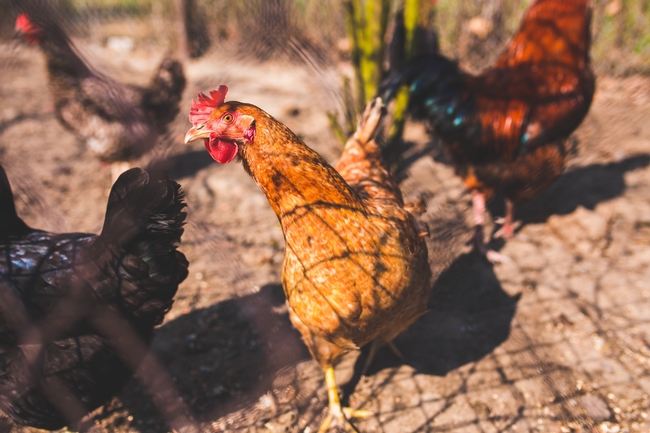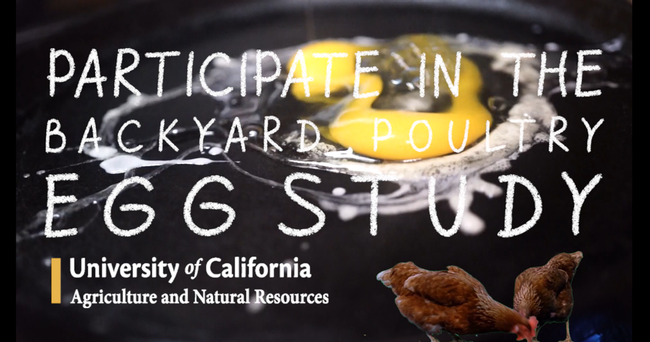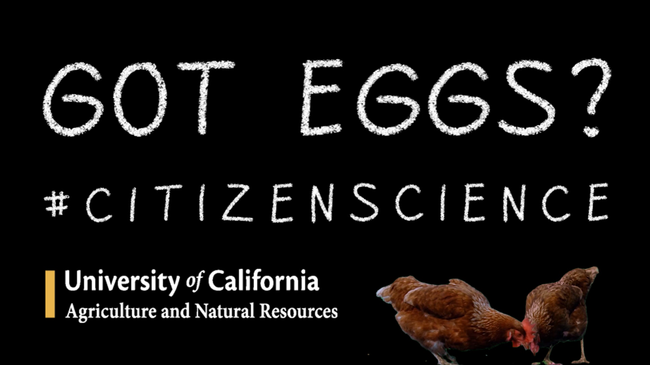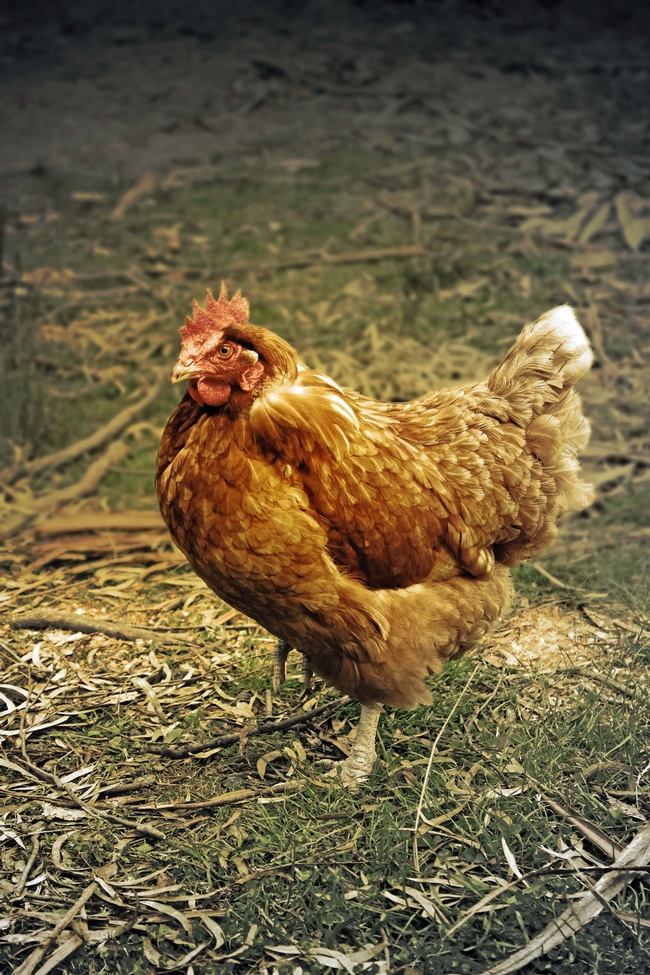- Author: Alda Pires
- Editor: Karen Giovannini

As part of the UCCE's commitment to helping build a more resilient community, the UCCE is partnering with the UC Davis School of Veterinary Medicine to hold a series of workshops throughout Northern California to provide backyard producers with information on animal health and biosecurity, antimicrobial use, and ways to comply with new federal and state antimicrobial regulations. This work is being funded by the California Department of Food and Agriculture (CDFA).
We are conducting a survey that is part of the Healthy Animals, Healthy People workshop series on animal health and antimicrobial use for backyard producers. This questionnaire asks about the specific practices and perceptions that you apply to your animals' health, husbandry, and antimicrobial use. This survey also seeks to identify whether your knowledge about these topics changed after attending the regional workshops.
The survey will take approximately 15-20 minutes of your time and the provided information will be kept strictly confidential. We will not connect your name with your responses. This study is being conducted for research and outreach purposes. You can choose not to participate or can quit the survey at any time.
This research has been reviewed by an Institutional Review Board (“IRB”). You may talk to an IRB staff member at (916) 703-9151 or IRBAdmin@ucdmc.ucdavis.edu if you have questions about your rights as a research subject. If you have any other questions, please contact the questionnaire administrator, Jasmin Bardales, at jabardales@ucdavis.edu, or the principal investigator, Dr. Alda Pires.
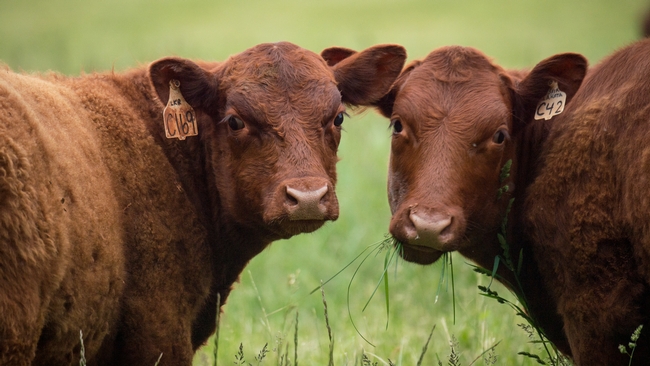
- Author: Karen Giovannini
backyard chicken eggs tested for FREE!
- Author: Karen Giovannini
In an effort to learn about issues small-scale poultry and rabbit meat producers face, please take/share this survey.
Poultry & Rabbit
Processing in California
We are looking for responses by
JANUARY 12.
Thank you!
- Author: BIRGIT PUSCHNER
- Author: Maurice Pitesky
- Editor: Karen Giovannini
By Dr. Birgit Puschner, UC Davis School of Veterinary Medicine and
Maurice Pitesky, UC Davis School of Veterinary Medicine-Cooperative Extension
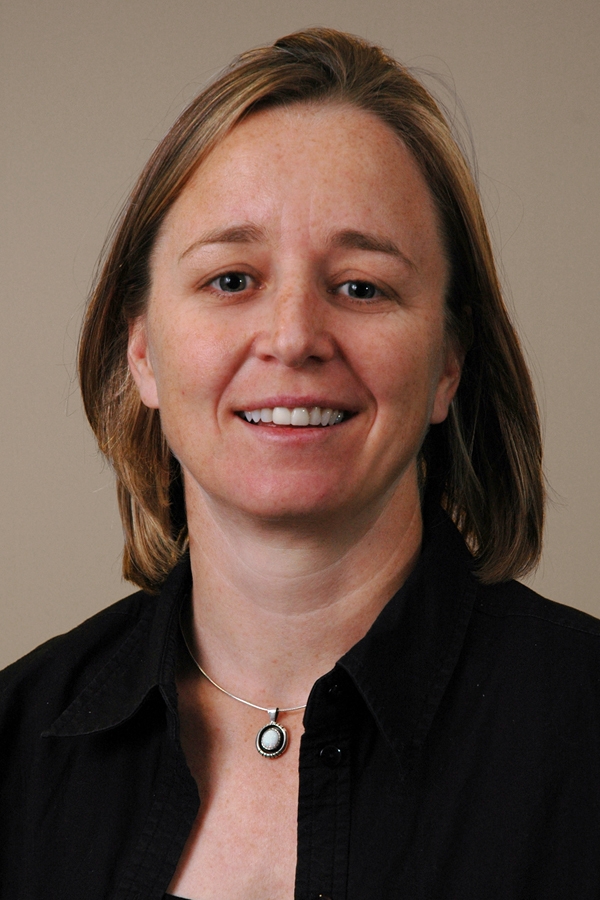 Dr. Brigit Puschner |
 Dr. Maurice Pitesky |
In addition to all the destruction and inhalation of smoke associated with the recent fires in Northern California, one of the unfortunate legacies remaining are chemical contamination of land, soil and water. The wildfire debris can include household hazardous waste (e.g. batteries and other electronic waste, paints, flammable liquids), building material (e.g. stucco, sheetrock, joint compound, asbestos siding and pipe insulation), pesticides, and fire suppression chemicals that may have been used. For example, ash debris from the California wildfires from 2007 was found to contain heavy metals that could cause long term health effects with exposure at high levels.
Backyard chickens typically live off the soil and hence are at risk for exposure to some of the chemicals in the debris. Since backyard chickens are food animals with respect to egg and meat production, there is a risk that some of these substances may be ingested by chickens and deposited inside eggs which are then laid by the chickens.
Unfortunately, there is limited scientific data on this issue. To that point there are no controlled studies, to our knowledge, that have assessed whether many of these chemicals can be found in eggs following ingestion by chickens. In addition, withdrawal periods following exposure are also not understood.
What can you do?
The concern to human health is with respect to the consumption of eggs and poultry meat from chickens exposed to the above listed toxic debris as a result of the recent fires. Out of an abundance of caution: if you know or suspect that your birds were foraging in burnt areas, we recommend not eating eggs from those hens for the remainder of their life. 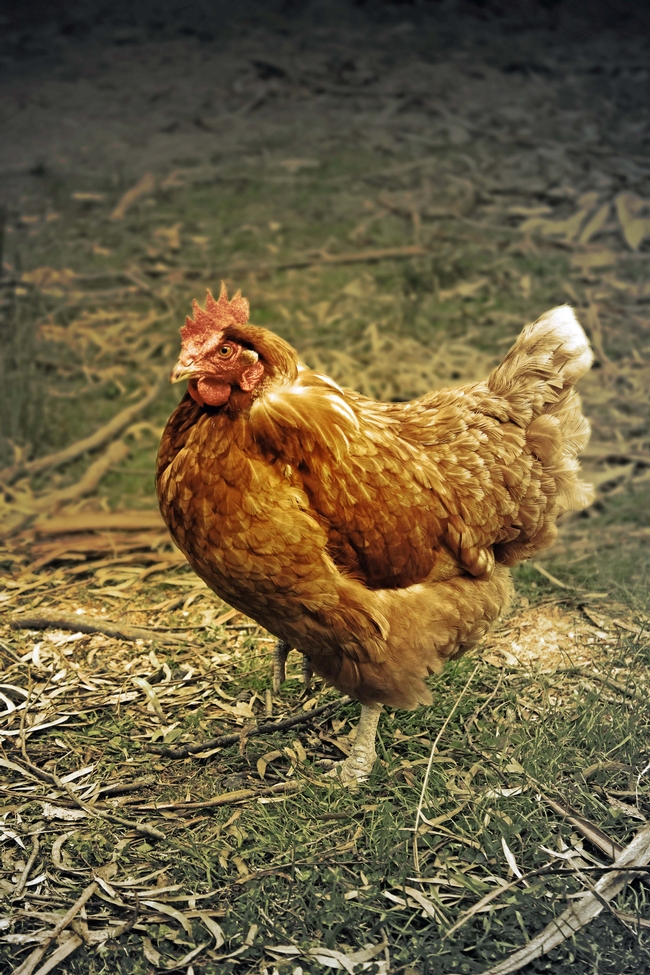
In addition, in order to better understand the chemical contamination of eggs from hens living in areas impacted by wildfires we encourage people in affected areas to submit eggs to UC Davis for testing. Testing costs will be free.
For submission, please mail up to 6 eggs overnight to the following address:
UC Davis School of Veterinary Medicine
Attn: Dr. Maurice Pitesky
1 Shields Drive
VM 3B Room 4007
Davis, CA 95616
Please include the following information:
- Contact information
- Address where birds are located
- Number of birds in your flock
For further questions please contact Dr. Birgit Puschner or Dr. Pitesky.
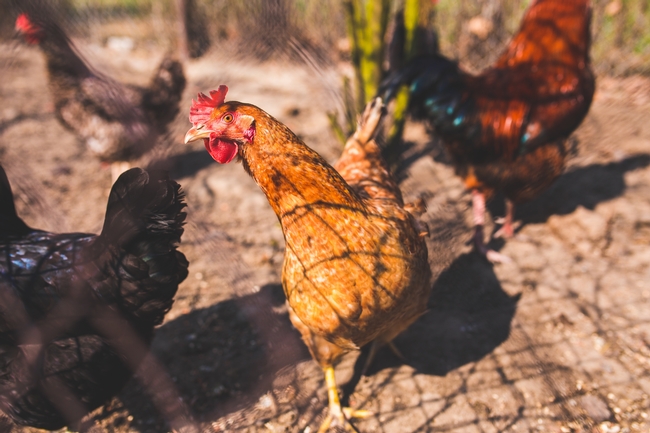
- Author: Maurice Pitesky
- Contributor: Karen Giovannini
Dr Maurice Pitesky, DVM, MPVM, ACMPM, UC Davis School of Veterinary Medicine is major contributor to this blog.
Preparing for Highly Pathogenic Avian Influenza in California:
Tips and Resources for Pasture Poultry Producers and Other Poultry Owners
Note to 'backyard' producers: see link to Poultry Census.
Our temperate winter climates are not only appealing to the estimated 39 million people that reside in California, it is also the perfect habitat for the estimated 6 million ducks and geese that migrate south in the fall and winter. This migration of waterfowl follows the “Pacific Flyway” which traverses Alaska to the southern tip of Chile.
It is estimated that ~5-20% (~300,000 to 1.2 million) of the waterfowl arriving in California every fall are shedding the Avian Influenza (AI) virus. The virus is maintained in the intestinal tract of infected waterfowl and infected birds can shed the virus in their feces for approximately 7 days. Depending on the environmental conditions the virus can remain viable in the environment for months.
The reality that avian influenza is endemic in waterfowl and that they are the primary reservoir of disease is an important fact that we need to be aware of in order to protect our flocks. In addition, while the virus does not typically cause disease in waterfowl and other avian wildlife, certain strains of avian influenza can cause high mortality in domestic poultry. Consequently, it is important to mitigate contact between domestic poultry and waterfowl including shared environments in order reduce the potential for transmission of disease. Therefore, while we know the source of AI, the burden is on us to reduce the risk of transmission of disease to our domestic flocks.
Highly Pathogenic Avian Influenza (HPAI) in North America:
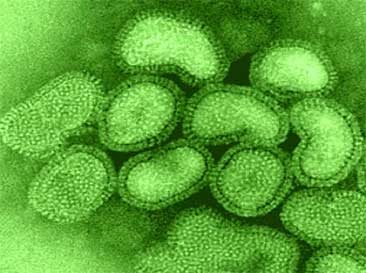
Farm Plan for HPAI
Each poultry operation is unique and should therefore have a operation specific plan in place to address biosecurity. Having a plan in place is also a key component to getting indemnification payment from USDA if there is an outbreak and the flock must be depopulated. California Department of Food & Ag has a Biosecurity Risk Assessment Guide (pdf) to help poultry operations prepare for and deal with biosecurity issues. In addition you can contact the USDA-APHIS if you have specific questions regarding preparation and eligibility for indemnification.
What can you do to protect your flocks in Sonoma and Marin Counties?
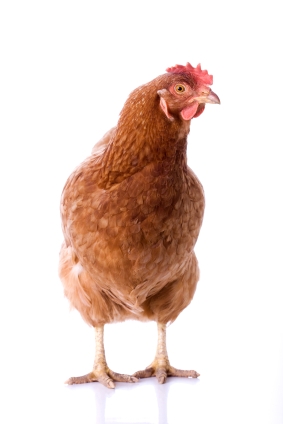
Pastured poultry production is a unique approach toward poultry husbandry. However, like all food-animal production systems there are advantages and disadvantages to each system. Bio-Security (the prevention of disease from getting on to your farm and causing disease in your birds) is a significant weakness in pastured poultry production. Learn more at Highly Pathogenic Avian Influenza (HPAI)
BACKYARD POULTRY PRODUCERS
Participate in UCCE's Backyard Poultry Census so that you will be notified if HPAI (or some other deadly disease) is making its way through California poultry
More information about Pasture Poultry can be found at Dr Pitesky's site: UCCE Poultry
